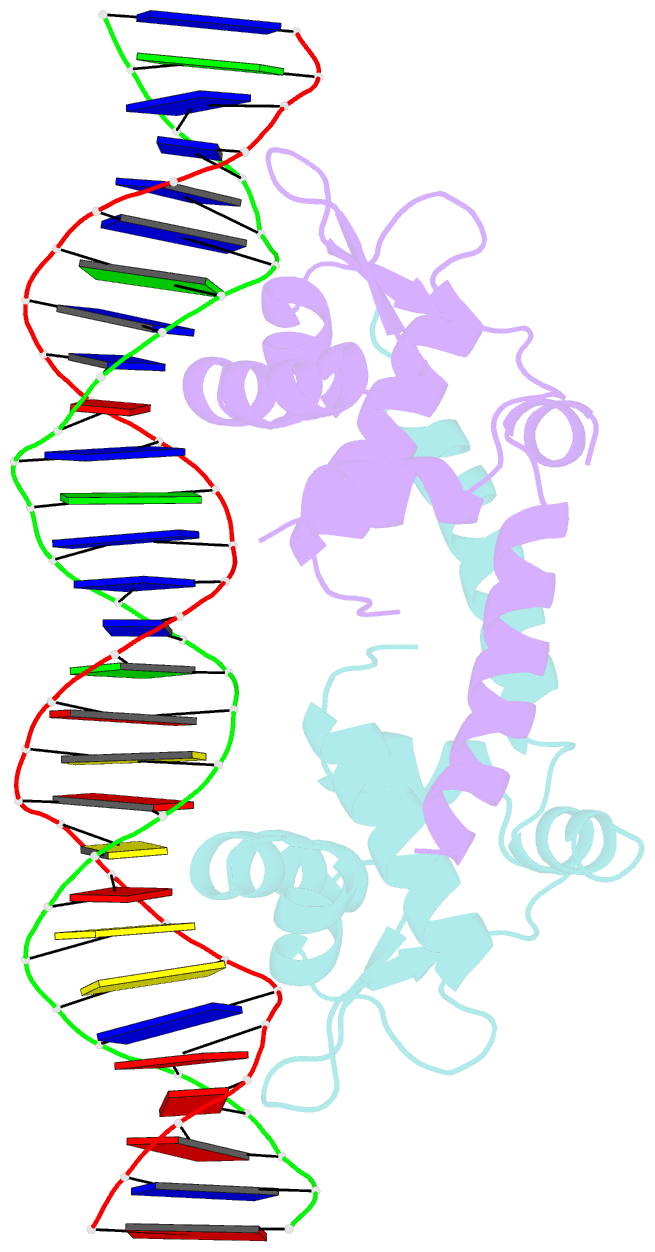Summary information and primary citation
- PDB-id
- 4hf2; SNAP-derived features in text and JSON formats;
DNAproDB
- Class
- transcription-DNA
- Method
- X-ray (2.99 Å)
- Summary
- Crystal structure of e43a iscr mutant bound to its promoter
- Reference
- Rajagopalan S, Teter SJ, Zwart PH, Brennan RG, Phillips KJ, Kiley PJ (2013): "Studies of IscR reveal a unique mechanism for metal-dependent regulation of DNA binding specificity." Nat.Struct.Mol.Biol., 20, 740-747. doi: 10.1038/nsmb.2568.
- Abstract
- IscR from Escherichia coli is an unusual metalloregulator in that both apo and iron sulfur (Fe-S)-IscR regulate transcription and exhibit different DNA binding specificities. Here, we report structural and biochemical studies of IscR suggesting that remodeling of the protein-DNA interface upon Fe-S ligation broadens the DNA binding specificity of IscR from binding the type 2 motif only to both type 1 and type 2 motifs. Analysis of an apo-IscR variant with relaxed target-site discrimination identified a key residue in wild-type apo-IscR that, we propose, makes unfavorable interactions with a type 1 motif. Upon Fe-S binding, these interactions are apparently removed, thereby allowing holo-IscR to bind both type 1 and type 2 motifs. These data suggest a unique mechanism of ligand-mediated DNA site recognition, whereby metallocluster ligation relocates a protein-specificity determinant to expand DNA target-site selection, allowing a broader transcriptomic response by holo-IscR.





